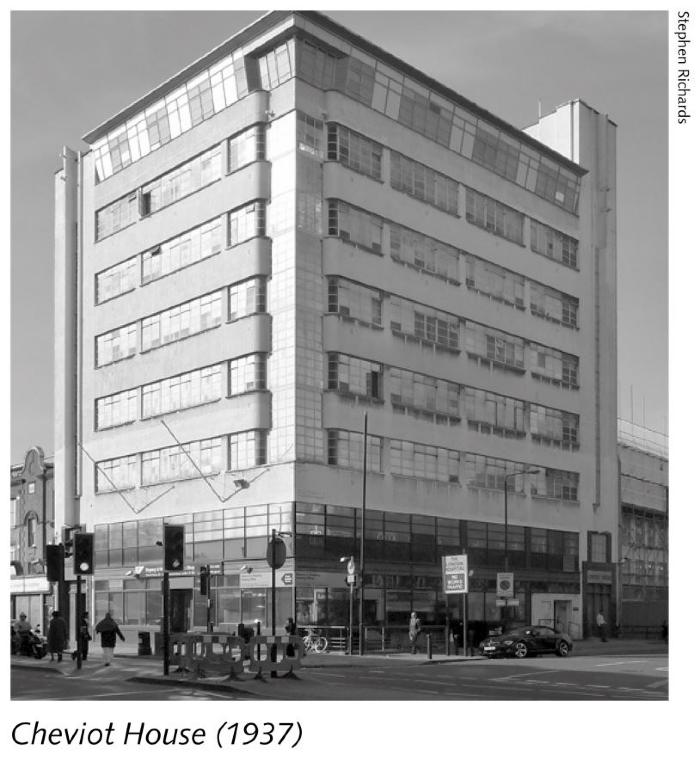To display in FULL SCREEN hover the cursor over the image above and click the top left zoom button
Goodman George Winbourne was born in Russia in 1892. He used the family name of Winebaum until taking British nationality in his mid-twenties, having immigrated to London like so many Russian and Eastern European Jews during the early part of the twentieth century.
His architectural career began early, and by eighteen he was articled to the office of an architect and surveyor; after serving with the Royal Air Force during the First World War he was made an Associate of the RIBA in 1920. There is a reference to Suburb architect T.M. Wilson in Winbourne’s RIBA papers and this may be how he came to work on Hampstead Garden Suburb.
Winbourne worked on the Suburb from 1935-37, and, in different ways, his houses reflect the architectural trends of that period. Lytton Close is a delight to stumble upon, made all the more unexpected by its contrast with the surrounding streets.

With their flat roofs, glazed rooftop pavilions, balconies and brilliant white external render, the houses are a confident and accomplished expression of the Modernist architectural principles which were beginning to become more widespread in Britain at the time, having already enjoyed some popularity in continental Europe. When viewed on a bright, sunny day, the houses of Lytton Close give off an almost Mediterranean air especially with their provision for rooftop sunbathing. Architectural historian Finn Jenson describes Lytton Close as possibly ‘the best example of middle-class Modernism in this country’.
Winbourne also designed Nos. 36-42 (even), Linden Lea which frame the entrance to Lytton Close. These two are quite Modern in some ways, with their balconies, Crittall windows and strong horizontal emphasis. However the brick walls and pitched roof acknowledge the streetscape of Linden Lea.

Elsewhere in London, Winbourne worked on larger developments including Cheviot House on Commercial Road for textile merchants Kornberg and Segal; attractive, modern apartments at Kew Bridge Court built in 1936, now substantially remodelled; and a factory at Wembley for Charles Kinloch & Co. Ltd., now demolished.
Designed in 1937, Cheviot House was described by the Twentieth Century Society as ‘one of the best remaining examples of a flatted factory in its area and time period,’ with its corner plot accentuated by a striking steel-framed fenestration treatment.
Winbourne was still practicing as an architect into the early 1940s. He died in 1947, aged just 54.